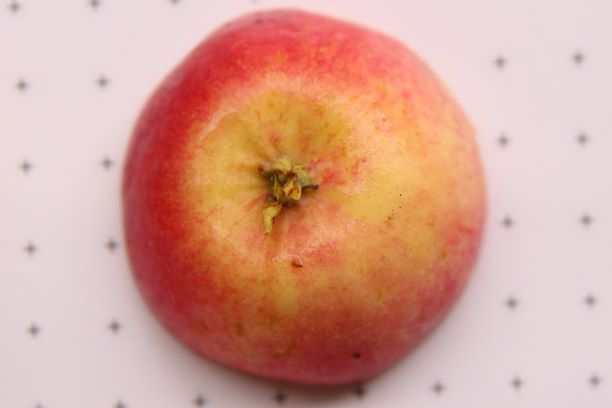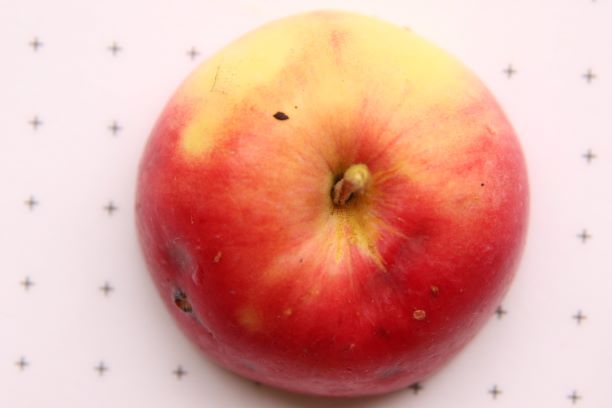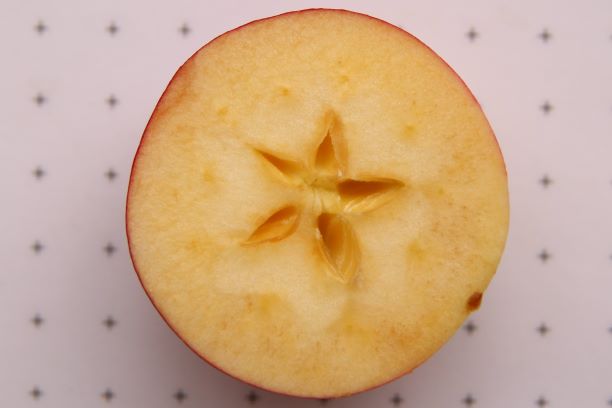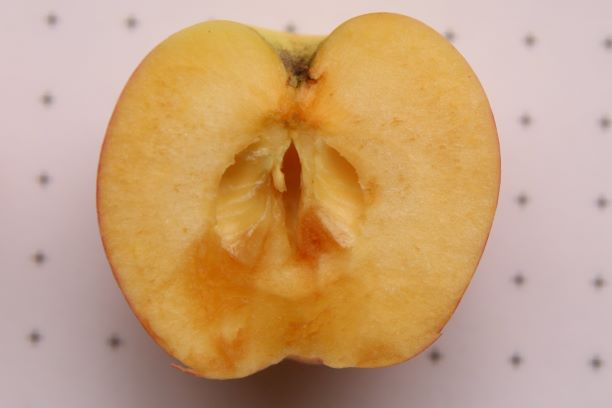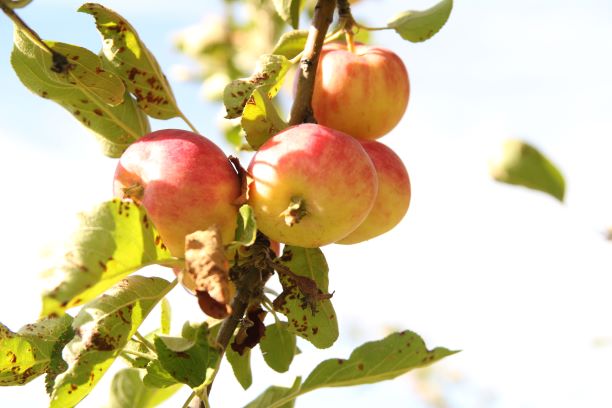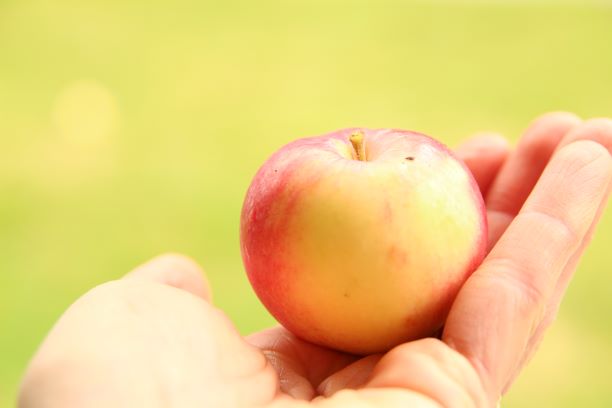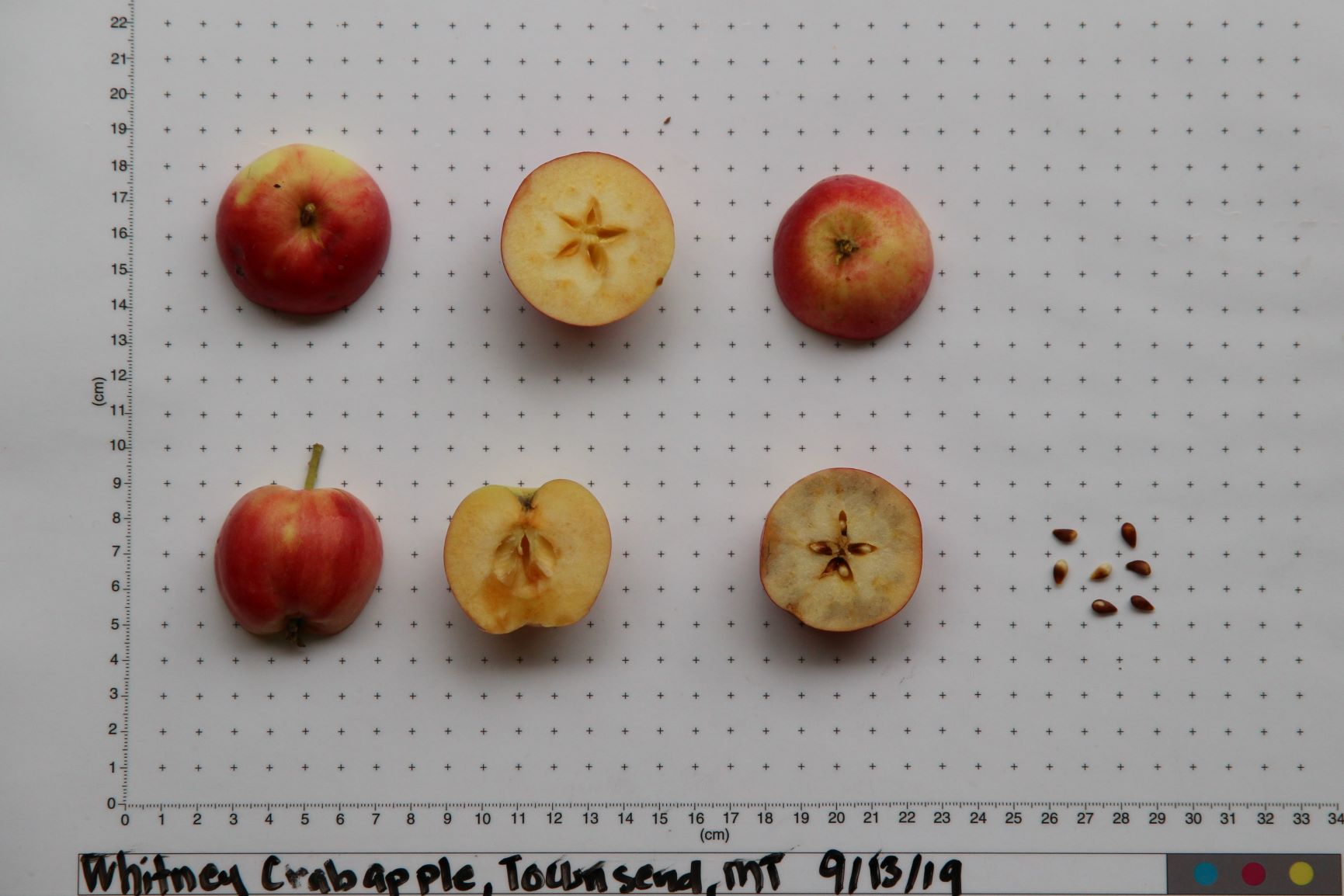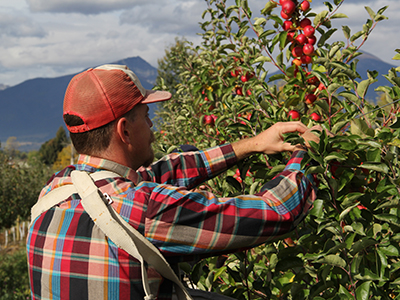Whitney
Fruit Description
Size: Small to medium (large for crab apple).
Shape: Round to round conical, regular.
Skin: Yellow to greenish yellow ground color flushed with carmine or scarlet flush, sometimes striped or mottled. Dots inconspicuous or rare. Skin smooth, no russetting.
Stalk (stem) and Cavity: Stem long, slender. Cavity acute, green, deep.
Basin: Wide, shallow, furrowed.
Calyx (Eye): Small, closed to slightly open.
Core (Vertical): Core lines faint.
Carpels and Axial Sac (Transverse): Axile closed to open, axial sac none to large. Carpels medium.
Seeds: Numerous, dark brown, pointed.
Flesh: Cream to yellow, juicy, browns and bruises easily.
Flavor: Subacid, slightely aromatic and astringent.
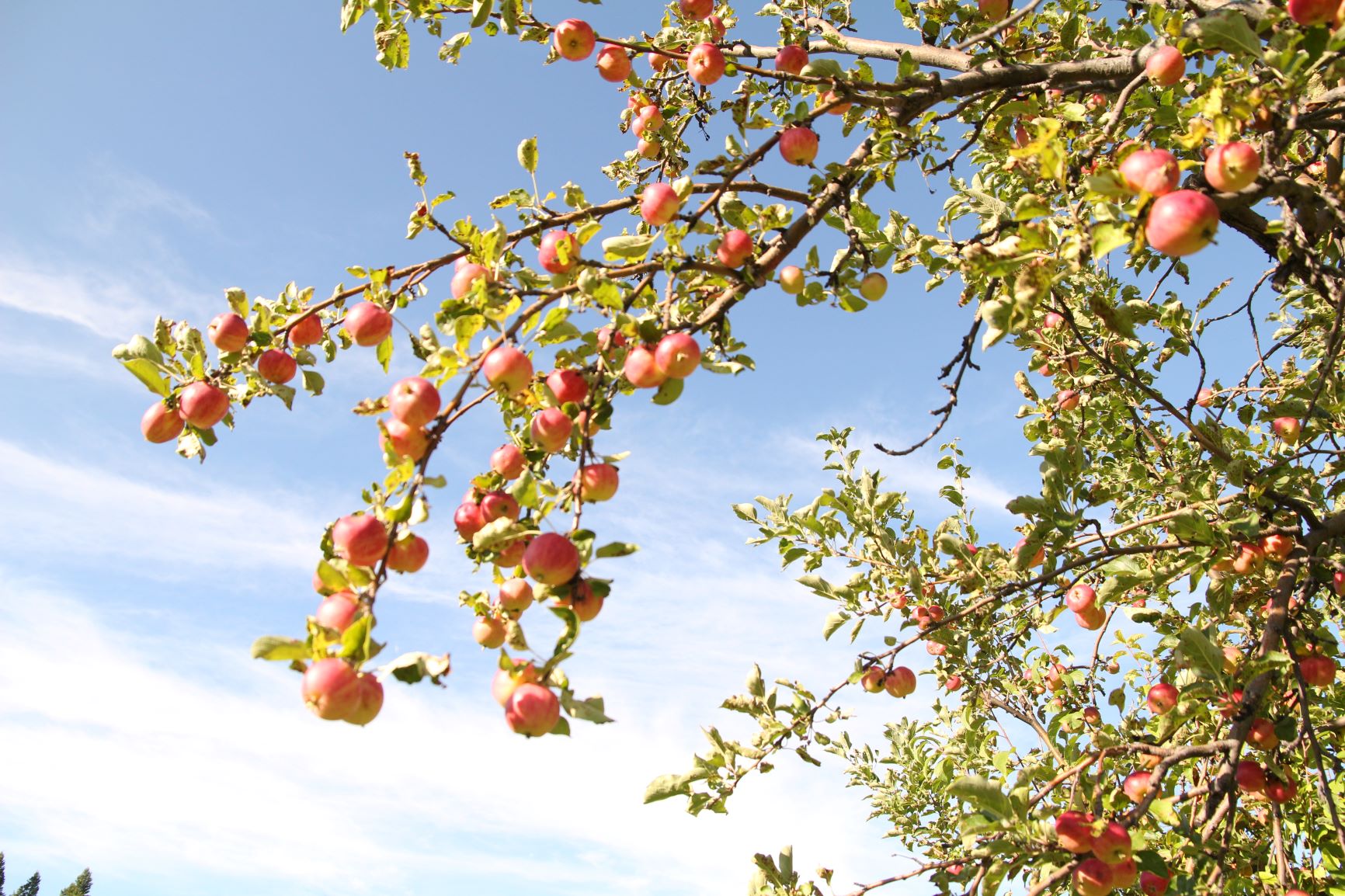
Additional Notes
Synonyms: 'Wallace Whitney', 'Whitney's Crab', 'Whitney No. 20'
First Recorded: C. 1869
Origin: Franklin Grove, Illinois
Bloom time: Early to Mid
Harvest: Mid to late
Use: Culinary, sauce, jelly, cider, fresh eating for those who like a little astringency
Storage: Fair
Disease: Good resistence to scab, fire blight and cedar apple rust
Tree: Cold hardy, spreading drooping habit.
Parentage: Unknown
Frequency in Montana Orchards based on DNA testing: Low, mostly homestead plantings
Look alikes: 'Transcendent', only for similar size.
History
The 'Whitney' crabapple originated from the Whitney Nursery of Franklin Grove, Illinois, where it was grown from seed by nurseryman A.R. Whitney around 1865 or possibly prior. It was first recorded in 1869 and became a popular crabapple for its cold hardiness and good production. In Montana it was listed as one of the best crabapple varieties to grow in the early 1900s and recommended for production in Lincoln County.
